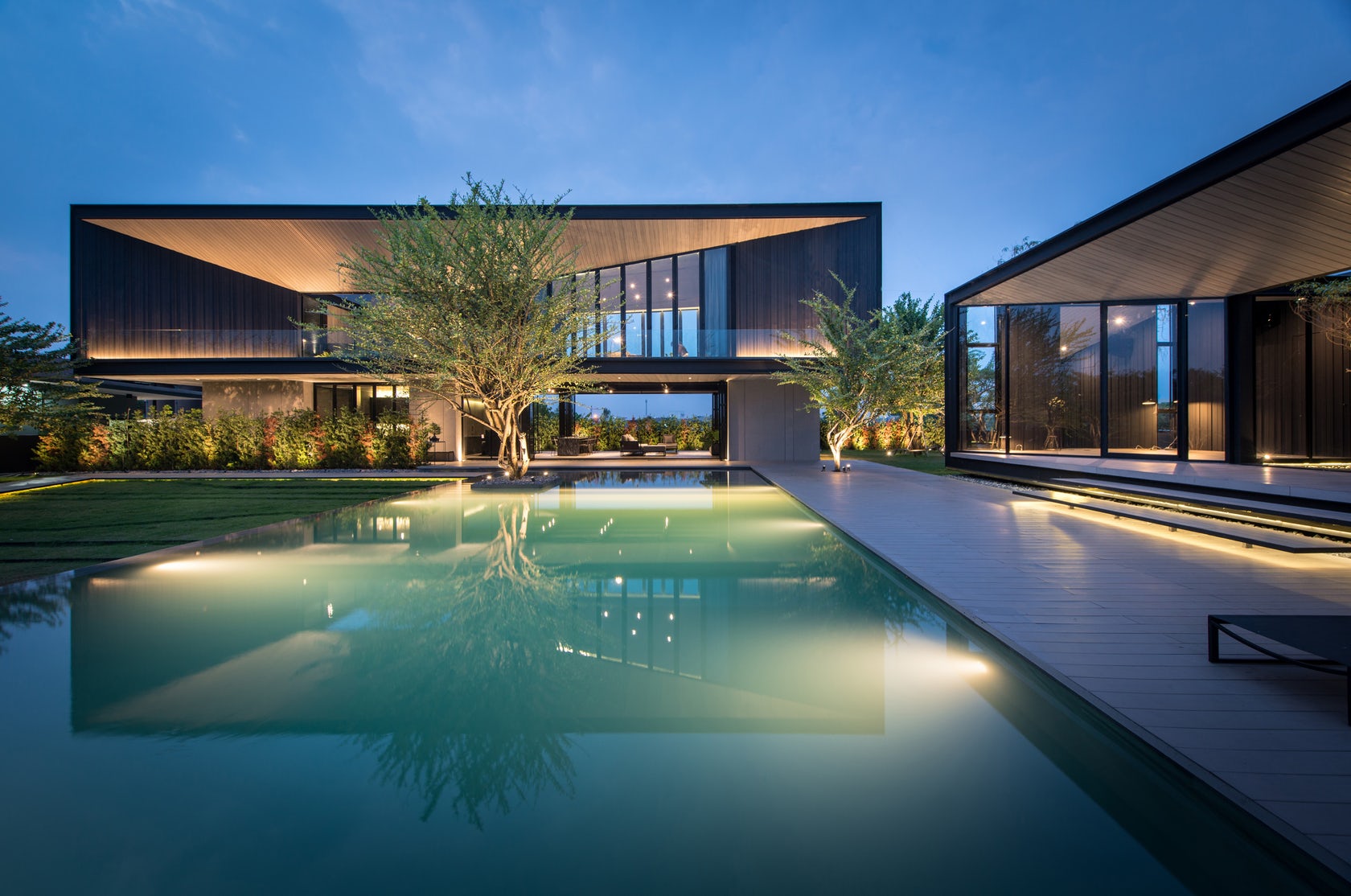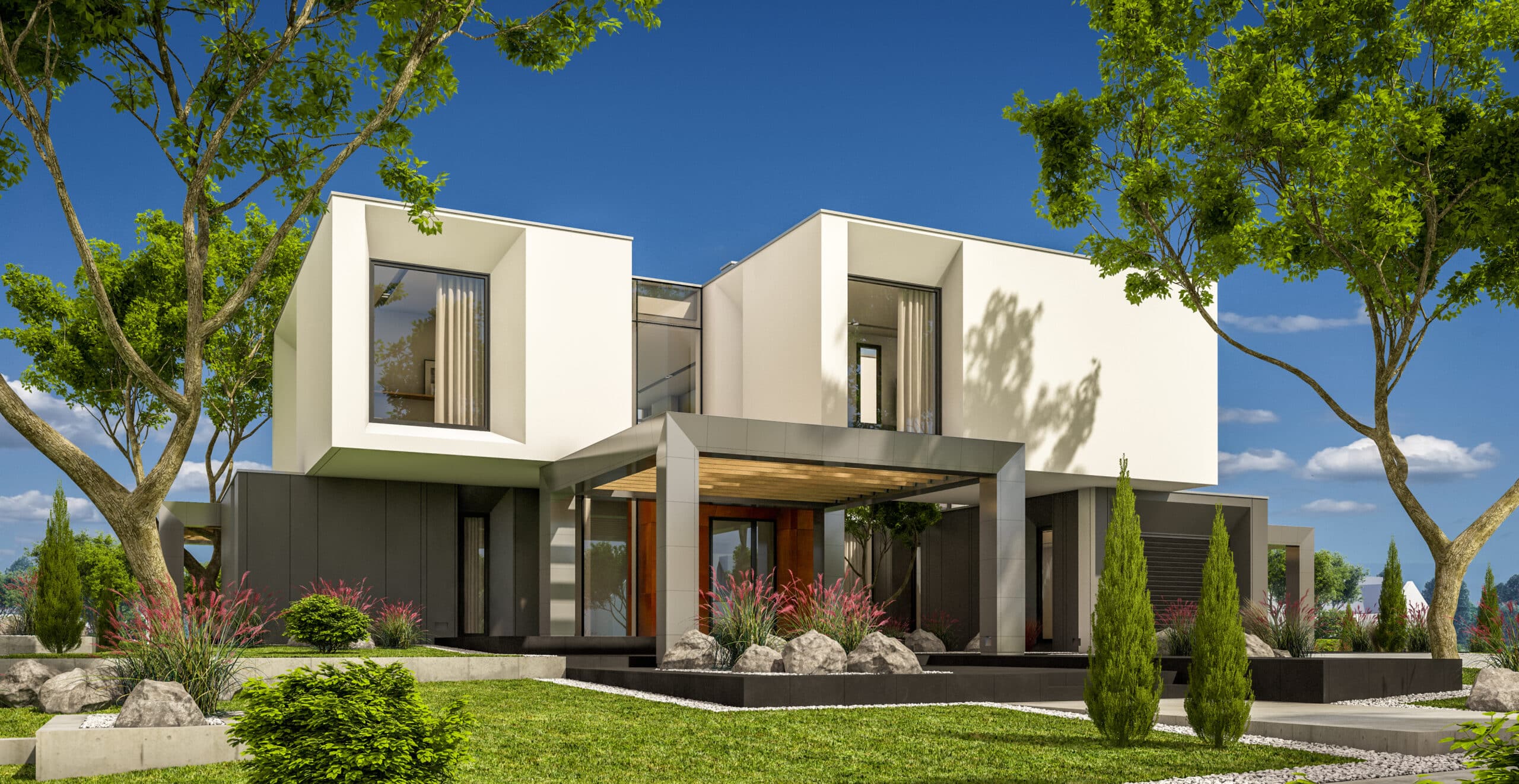Green Sustainable Residential Building Solutions for a Greener Future
Wiki Article
The Function of Modern Home Architecture in Creating Functional Living Spaces
Modern home architecture substantially affects the performance of living areas, specifically through the fostering of open floor strategies and the use of sustainable materials. These style concepts not just boost social connection but also promote adaptability for different tasks within the home.Relevance of Open Flooring Program
Open layout have come to be a characteristic of contemporary home design, showing modern choices for connection and adaptability in living areas. This layout concept eliminates typical barriers, permitting a seamless flow between the kitchen area, dining, and living areas. The result is an inviting setting that cultivates social communication and engagement among member of the family and visitors.The importance of open flooring plans extends beyond aesthetics; they also boost capability. Property owners can quickly adjust these rooms for numerous tasks, from entertaining guests to family events, making them extremely versatile. Open layouts commonly make a home feel bigger and a lot more large, adding to an overall sense of comfort and convenience.
Furthermore, the assimilation of all-natural light is a significant advantage of open layout. Huge home windows and fewer wall surfaces increase the infiltration of sunlight, developing a brighter and extra inviting ambience. This facet not only improves the setting yet can additionally favorably impact the owners' mood and well-being.

Lasting Products in Layout
As contemporary home style remains to progress, the option of products has obtained boosting importance, particularly in the context of sustainability. The combination of sustainable materials not just lowers the ecological effect of building and construction however also boosts the overall quality of living rooms. Engineers and contractors are now prioritizing products that are sustainable, recyclable, and have reduced embodied energy.

Additionally, eco-friendly insulation materials, like cellulose and sheep's wool, enhance energy efficiency, causing reduced utility prices. Making use of low-VOC (unpredictable natural substances) paints and surfaces additionally promotes healthier interior air top quality, aligning with the expanding understanding of health in home design.
Incorporating these lasting products not only cultivates ecological responsibility but also produces visually pleasing and functional living rooms. As house owners end up being extra mindful of their environmental impact, the need for lasting materials will remain to shape contemporary home design.
Combination of Smart Technology
The assimilation of clever technology in modern home style is revolutionizing the way we experience and connect with our home. Home automation systems make it possible for locals to manage lights, temperature level, and protection via smart devices or voice commands, improving ease and comfort. This technological improvement not just simplifies daily find out here now routines but also promotes power performance, enabling property owners to keep an eye on and readjust their power consumption in genuine time.Moreover, clever innovation improves safety and security and safety features. Advanced monitoring systems and wise locks supply house owners with peace of mind, offering remote monitoring abilities and notifies for unusual activities. Integration of smart home appliances also plays a vital role, as devices like fridges, stoves, and cleaning devices connect with users, maximizing performance and decreasing waste.
Additionally, the seamless combination of clever innovation can boost the visual appeal of contemporary homes. Very discreet installments of sensing units and controls preserve the clean lines and minimal design that identify modern style. Overall, the marital relationship of smart technology and modern-day home architecture not only check my source boosts functionality yet likewise cultivates a more connected, reliable, and sustainable way of living. This harmony is leading the way for future innovations in domestic design.
Taking Full Advantage Of Room Effectiveness
Incorporating smart technology into contemporary home architecture not only boosts convenience however additionally resolves journalism demand for space effectiveness in significantly small living settings. The style of contemporary homes concentrates on multifunctional spaces that adapt to the occupants' demands. By using modular furnishings and built-in storage space options, designers can develop flexible locations that maximize functional square video footage.Open layout continue to be popular, permitting liquid movement between spaces and removing unnecessary walls. This method not only fosters a sense of space but additionally encourages natural light to penetrate throughout the home. Furthermore, ingenious storage solutions, such as under-stair areas and wall-mounted shelves, efficiently make use of formerly wasted areas.
Smart modern technology better contributes to room performance by making it possible for home owners to control numerous systems remotely. As an example, automated lighting and climate control can maximize power usage, minimizing the need for excess heating or cooling in underutilized areas. Additionally, incorporated home appliances designed for small living can streamline kitchen area and washing jobs, liberating important space for various other crucial functions.
Eventually, the thoughtful combination of style, design, and technology is vital for producing useful home that accommodate modern-day way of livings while making the most of effectiveness. melbourne home residential projects.
Enhancing Exterior Links
A growing emphasis on enhancing exterior connections is transforming contemporary home style into a seamless blend of interior and outside living. This development is driven by the acknowledgment of nature's extensive effect on wellness and lifestyle. Designers are increasingly making rooms that invite the outdoors in, using huge windows, gliding glass doors, and open layout that urge liquid activity between exterior and interior settings.Terraces, outdoor patios, and balconies are being integrated into the straight from the source general building idea, broadening functional space and fostering a link with nature. The incorporation of natural products, such as timber and stone, additional blurs the lines between inside and outdoors, creating a natural aesthetic that improves the home's general charm.
Landscaping additionally plays a pivotal role, with thoughtful layout that includes yards, water functions, and exterior seats areas. These elements not only enhance however additionally promote outside tasks and relaxation. Furthermore, lasting methods, such as making use of indigenous plants and effective irrigation systems, improve ecological advantages while lessening upkeep.
Eventually, improving outdoor connections via modern-day architecture not just enhances the living experience but likewise cultivates an unified relationship between residents and their natural surroundings.

Conclusion
Finally, modern home design substantially adds to the production of practical living rooms with the execution of open layout, sustainable materials, and smart technology. The emphasis on making best use of space effectiveness and promoting exterior connections better boosts the total high quality of life for owners. melbourne home residential projects. By focusing on these layout components, modern architecture not just meets the developing demands of homeowners however additionally advertises a harmonious partnership in between indoor and outdoor environments, eventually forming an extra sustainable futureReport this wiki page